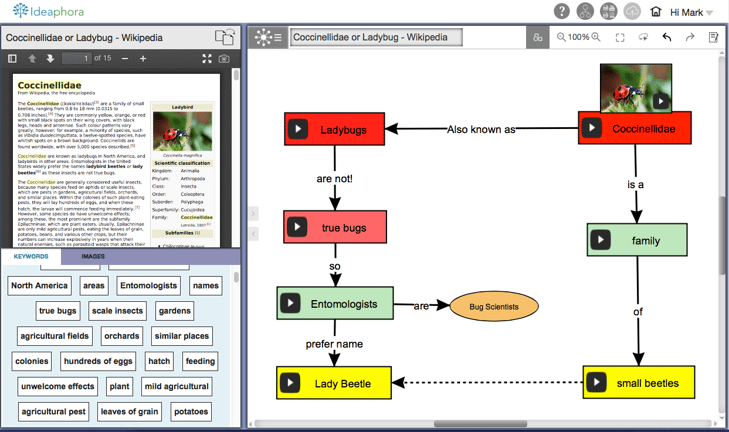This post is written by Mary Chase, Ph.D., an expert in curriculum design, literacy education, and technology integration.
It’s become a truism in education that every teacher is a teacher of reading. Sadly, that sentiment is more wishful thinking than it is a reality. While most teachers recognize that their students need support as they encounter increasingly difficult texts across the curriculum, very few of us have had intensive instruction in reading pedagogy.
Reading depends on three “cueing systems”:
- Grapho-phonics – how words look and sound
- Semantics – what words mean
- Syntax – the grammatical patterns that supports meaning when words are grouped together
For the most part, students learn grapho-phonics in primary school, and there’s an abundance of strategies for teaching word meanings. However, for teachers not trained in reading, using the syntactic cueing system to help struggling readers can be confusing and frustrating. Luckily, Ideaphora can support instruction in a powerful way without students having to recall parts of speech or verb tenses.
Consider the following paragraph:
The Coccinellidae are a family of small beetles. Coccinellidae are known as ladybugs in North America, and ladybirds in other areas. Entomologists in the United States widely prefer the names ladybird beetles or lady beetles as these insects are not true bugs.
Using Ideaphora, students can unravel this text as they identify keywords and show connections between ideas.

Notice that the text on the links consists of “structure words”—words we acquire as we learn language, but rarely define—prepositions and conjunctions, for example. Simple though they seem, they are packed with meaning in terms of idea relationships.
As students create maps of the text they encounter, they not only break down meaning, but also encode it in their memories using all three cueing systems. How does that work? I’ll share more on this in an upcoming blog post on dual coding theory.
Try Ideaphora with your students, and sign up for the Classroom Pilot Program.

